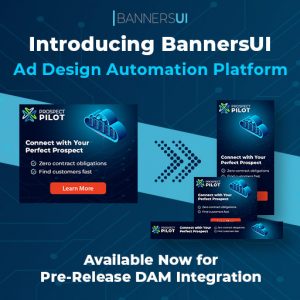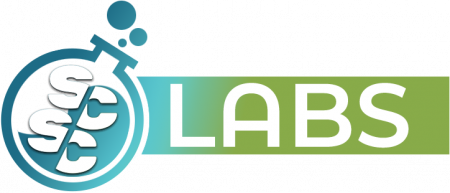The primary use case for Digital Asset Management (DAM) systems has historically been about finding archived content in a timely fashion. The major issues have been solved for a couple of decades: databases to hold metadata, the generation of realistic previews for search results and cloud (internet) delivery of media files to large numbers of users. While some areas such as scalability, user experience, security and regulated sectors have posed a few further problems, it is now virtually impossible for any vendor to compete solely on the core competency of Digital Asset Management alone.
This has left vendors facing competitive differentiation issues. There have been two major avenues of exploration, both of them Digital Asset Supply Chain related. These are integration with third party technologies and the provision of increasingly more sophisticated branding or creative capabilities for end-users within the DAM interface itself. In this article, I want to examine the latter with a particular focus on its relationship with digital media creative tools.
DAM’s History of Creative Tool Provision
Probably the earliest example of DAMs being used for creative production tasks was the generation of derivative files (i.e. assets created from the original for preview or download purposes).
 The introduction of web-based DAMs allowed a far wider group of users to access assets like digital photos. In large enterprises, especially, many users would not be working in marketing or creative jobs so would not have access to tools like Photoshop. This presented a problem when they downloaded very large print-quality images as it was usually impractical to insert them into the PowerPoint or Word documents where the assets would often get used. These were typically passed to in-house graphics studios (or agencies) who were then tasked with converting this sort of media and sending it back to the users. This kind of bottleneck limited the benefit of having a DAM in the first place.
The introduction of web-based DAMs allowed a far wider group of users to access assets like digital photos. In large enterprises, especially, many users would not be working in marketing or creative jobs so would not have access to tools like Photoshop. This presented a problem when they downloaded very large print-quality images as it was usually impractical to insert them into the PowerPoint or Word documents where the assets would often get used. These were typically passed to in-house graphics studios (or agencies) who were then tasked with converting this sort of media and sending it back to the users. This kind of bottleneck limited the benefit of having a DAM in the first place.
Vendors soon realised this, and in the early 2000s, they began providing built-in facilities to change the resolution of images, shift colour spaces from print (CMYK) to screen (RGB) and carry out other rudimentary production tasks. This is the start of the convergence trend between DAMs and creative tools.
Since then, there has been a gradual and continuous ramping up of the creative tooling, which many DAM platforms provide. Cropping features are another image-specific example. A further development was more advanced facilities for generating custom print media from templates where end users can customise some item of collateral like a leaflet or business card etc. but do so in a way that adheres to brand guidelines.
In the early days of these innovations, vendors attempted to develop the features in-house – usually with mixed success as many DAM development teams began to realise that the task was far harder than they anticipated. While some firms still do maintain their own print templating feature, the vast majority have outsourced it to specialist tool vendors who are able to focus on this problem.
While print is quite a specialised case (and arguably more of a declining market these days), the rise of digital media has become even more important. The theme is a familiar one and it follows the convergence trend referred to earlier. Rather than rely on specialist tools, dedicated departments or third party suppliers, DAM users want to be able to offer their organisations the facilities to create custom digital media themselves. Further, they want the assurance that what results will adhere to brand guidelines.
Introduction to Banner Ad Design Challenges
In respect of digital media, one of the major tasks enterprises face is the delivery of localised digital marketing materials, in particular, banners for websites. While there are some vague conventions and commonalities, potentially, a unique banner might need to be produced for each social media channel, web property, mobile app, advertising network or other digital media outlet where banners must appear.
This is hugely time consuming for creative production personnel. Setting aside variations like language, images etc. simply re-sizing banners presents more problems than might be expected. Changing dimensions may not simply be a case of specifying the required pixel dimensions (a task which can usually be carried out in a DAM). If the banner sizing is completely different than the current source artwork (e.g. rectangular to square) then changing the dimensions alone won’t work and the banner will require re-designing, whilst preserving the copy and design/brand objectives of the original.
According to a survey carried out by Santa Cruz Software, 85% of designers face issues with re-sizing banner production work. Whether enterprises use in-house departments or third party agencies, designers are usually under a lot of pressure to generate artwork for digital media campaigns in a timely manner. The same survey shows that over half (52%) of designers spend over 30 hours each week re-sizing banners, significantly impacting their ability to work on more creative tasks. Each of these routine re-sizing production tasks takes designers away from more creative (and arguably more important) projects, and therefore makes it more demanding for them to deliver digital media marketing campaigns on-time and within budget.
 Astute readers will notice a common theme from my earlier analysis of the supply chain convergence trends taking place in the DAM market. Once again, there is a need to replace creative tools with automated equivalents that can be operated by staff who might not necessarily have the skills required to produce derivative banners in different sizes.
Astute readers will notice a common theme from my earlier analysis of the supply chain convergence trends taking place in the DAM market. Once again, there is a need to replace creative tools with automated equivalents that can be operated by staff who might not necessarily have the skills required to produce derivative banners in different sizes.
One big difference, however, is that some discretion or ‘intelligence’ is required to decide how to make decisions about changing the alignment of key graphic elements. As discussed, this isn’t simply a case of automating key-strokes and menu options: some critical thinking is required. As such, a banner advertising automation tool needs access to a lot of historical data about design decisions that were taken in the past to solve these issues. To put it in simpler terms, the tool needs access to the collective brainpower of many designers over an extended period of time that can be measured in years.
As with print templating (but in a completely different realm) this is all quite specialised knowledge which most DAM vendors simply don’t have. Even if they were to acquire the data from somewhere, developing the capabilities to re-interpret it and render graphics as well is a considerable task which most development teams are simply not properly resourced to deal with, making the case for these DAMs to leverage integrated tools that already have these capabilities..
Workflow and Approvals
Until 5-10 years ago, most DAM platforms had quite limited workflow capabilities. Although still not exactly perfect, they have substantially improved, especially as DAMs have become more embedded in organisations’ Digital Asset Supply Chains.
The approval process for derivative artwork tends to be less onerous than required for original material. One of the significant benefits of having specialist creative tools tightly integrated into DAMs is the opportunity to leverage the latter’s workflow capabilities. As such, not only can end users be provided with the creative tools to render derivative banners, but they can also be approved, with a full paper trail that can be audited later should the need arise.
The Role of Generative AI
The significance of Generative AI and its role within DAM has increased significantly in the last 18 months. At the recent OnDAM conference in Paris last year, there were multiple vendors demonstrating integration features with image-oriented Generative AI which were impractical until comparatively recently. As is common with the DAM industry, the market was slow to acknowledge the opportunity, but it is now firmly on the agenda and I doubt there are many firms who have not at the very least begun research into how to offer it to their own users.
Recently, I have discussed how Generative AI might impact creative production tasks with other DAM market commentators. An opinion that has been advanced is that a dedicated tool for digital advertising production (such as banners) will not be necessary because end-users will simply be able to issue prompts to get AI to automatically render them. Superficially, this appears to be a reasonable assumption. The problem with the prompt-oriented method of generating media is that it lacks precision when it comes to fine-tuning and making changes. Currently, the outputs from Generative AI tools are not editable formats, like PSD or AI files, making fine tuning a tedious, imprecise process of “guess and check.” For example, if you need to move a section of copy slightly to the left, doing this with a prompt like ‘move the upper right block of copy to the left three pixels’ is far more cumbersome than using a mouse and keyboard, especially if the AI misinterprets the instruction or you need to refine the adjustment further.
My expectation is that the majority of readers of this article will have experimented with text-based Generative AI tools like Chat-GPT, and a good number will have tried Stable Diffusion and others that are image-oriented. In nearly all cases, the raw output from these systems is not satisfactory to use without some human-mediated adjustment. While the rendering is undeniably impressive, the interface to AI tools still lacks something, and there is a wider question over whether AI will ever be able to both explicitly and implicitly understand what is being asked of it. The need for tools to permit a form of human intervention is going to remain for quite some time because end users will need both the expressive power of Generative AI and also the capacity to fine-tune and tweak what it delivers to them.
Conclusion
The range and scope of creative production facilities targeted at end-users will almost certainly increase in the medium-long term. That most of this is likely to be screen-based seems beyond doubt. While it might appear to be quite a narrow use-case, the requirement to generate derivative banners is one of these dull but essential marketing production tasks which are ideally suited to Digital Asset Management platforms. DAM vendors who have not yet begun to make plans to offer these facilities to their users are likely to find themselves at a competitive disadvantage to their peers who have been more forward-thinking.
About Ralph Windsor
Ralph Windsor, a seasoned professional in the Digital Asset Management (DAM) industry since 1995, has served as the Project Director at Daydream, and he now oversees the editorial and commercial operations of DAM News. His extensive experience encompasses all facets of DAM implementation, including metadata schema design, vendor selection and change management. Windsor has contributed to over 120 DAM projects, offering expertise in areas ranging from data migration to ongoing governance. Based in the United Kingdom, he specializes in areas such as metadata, legal rights management and technical aspects of DAM.


